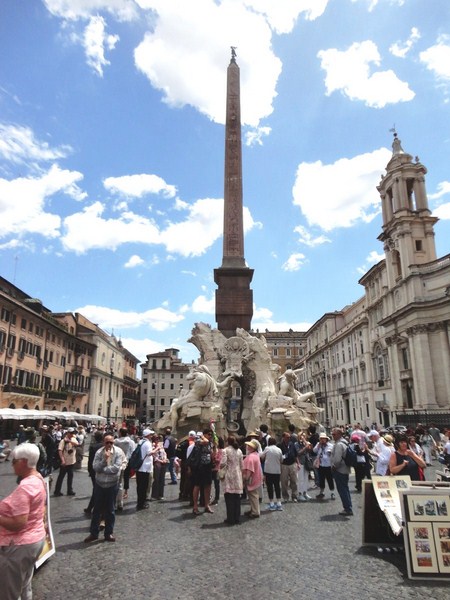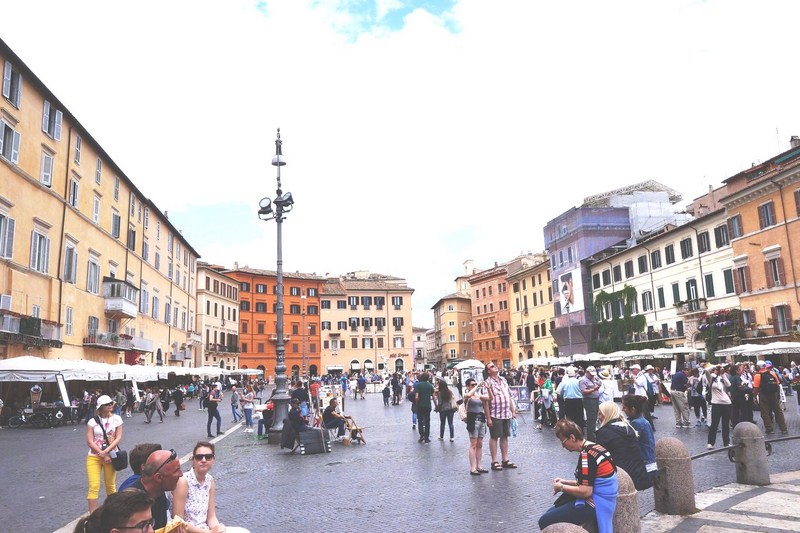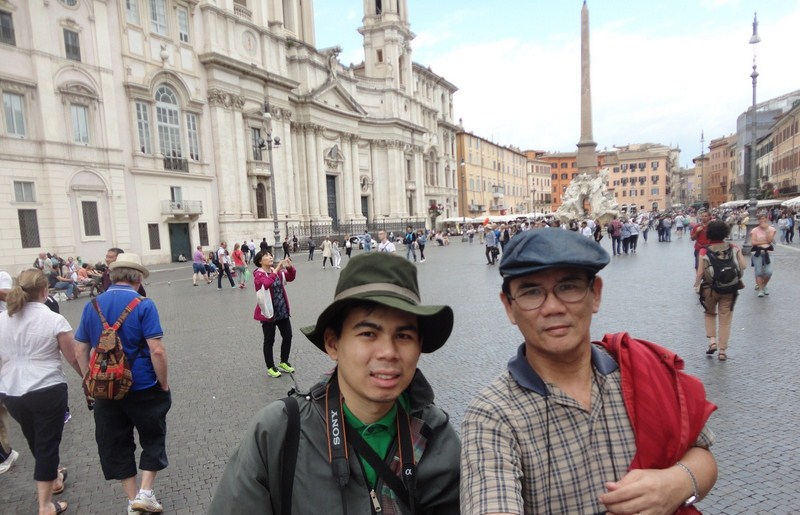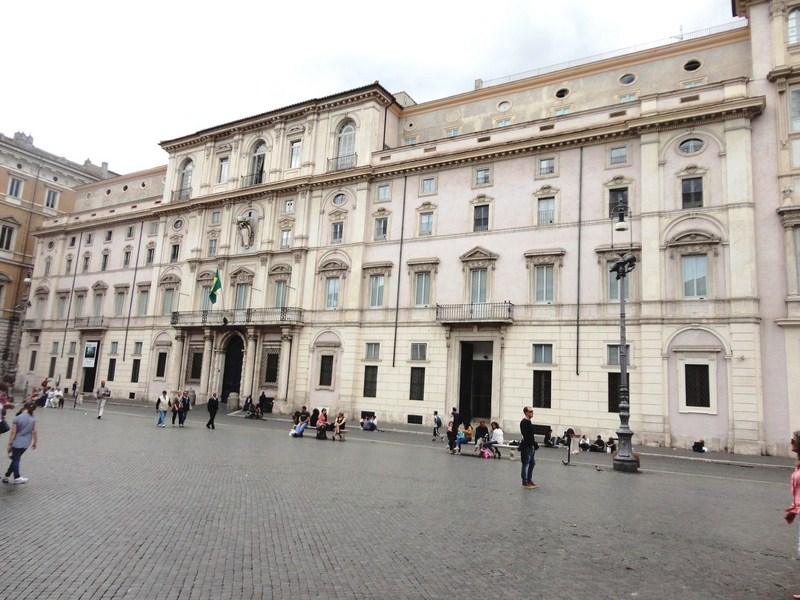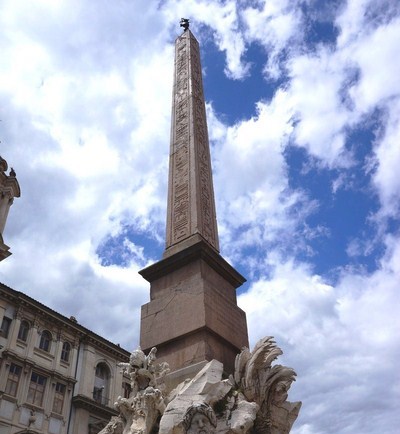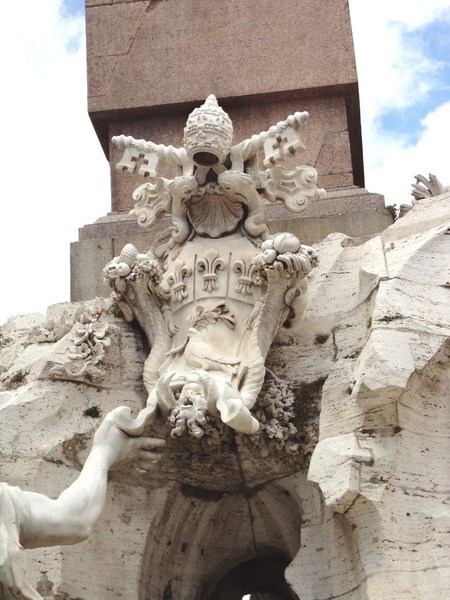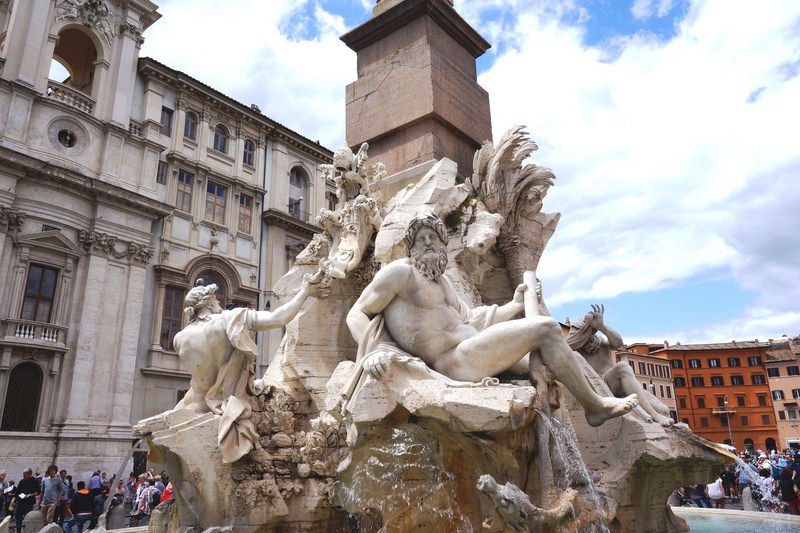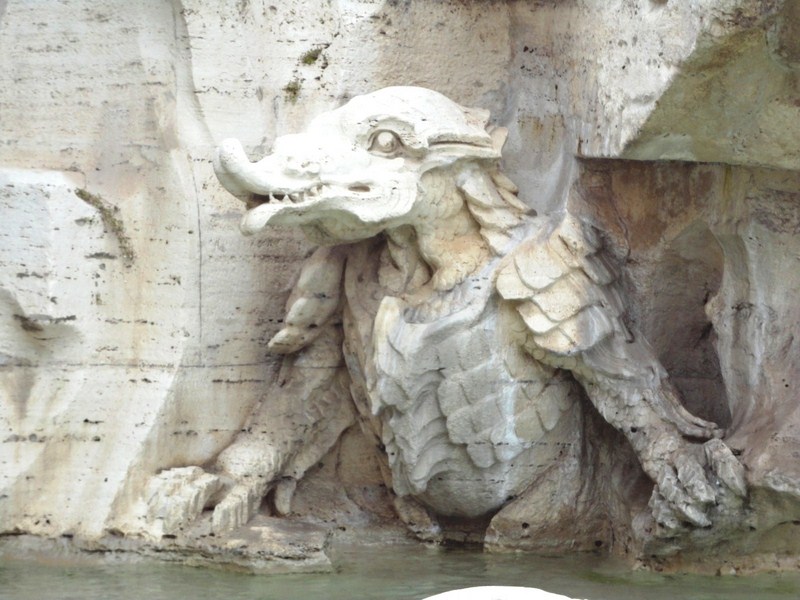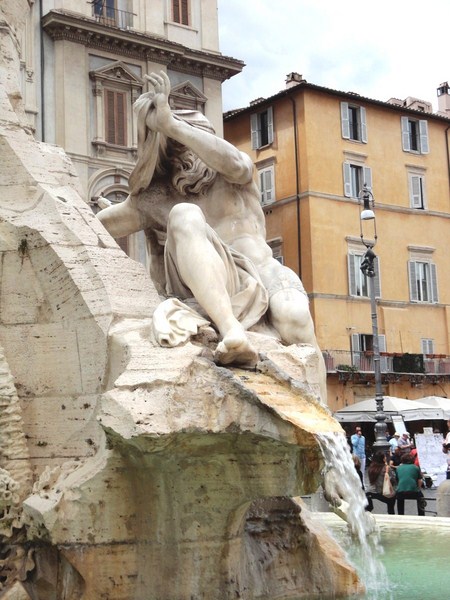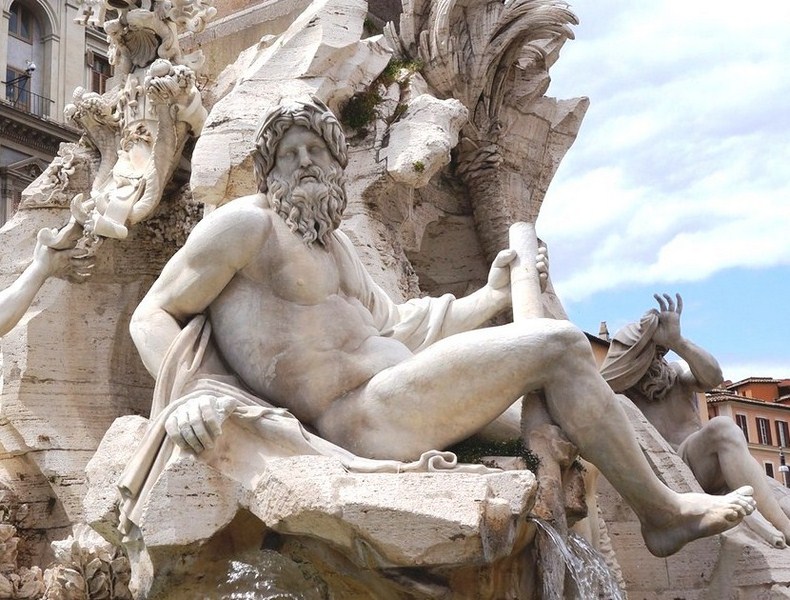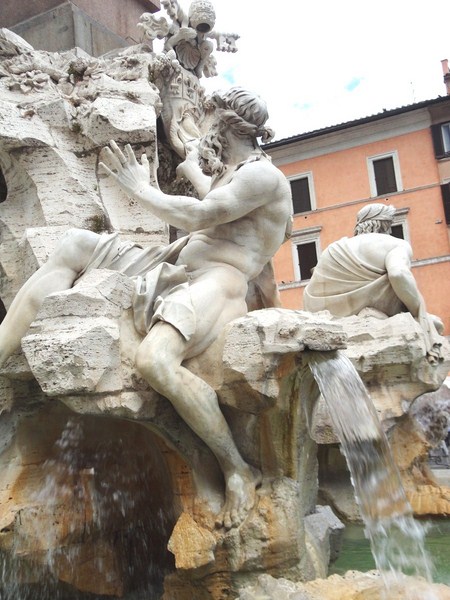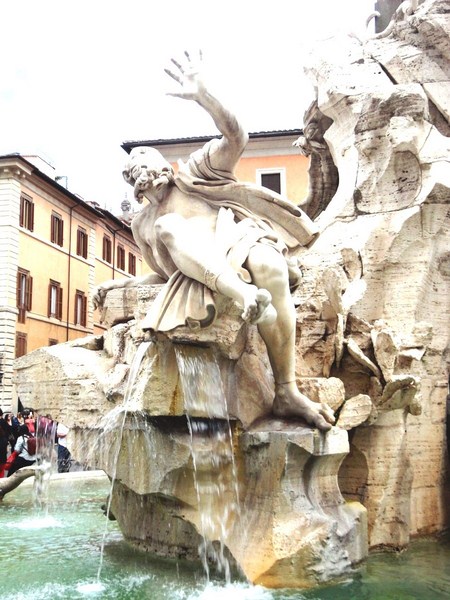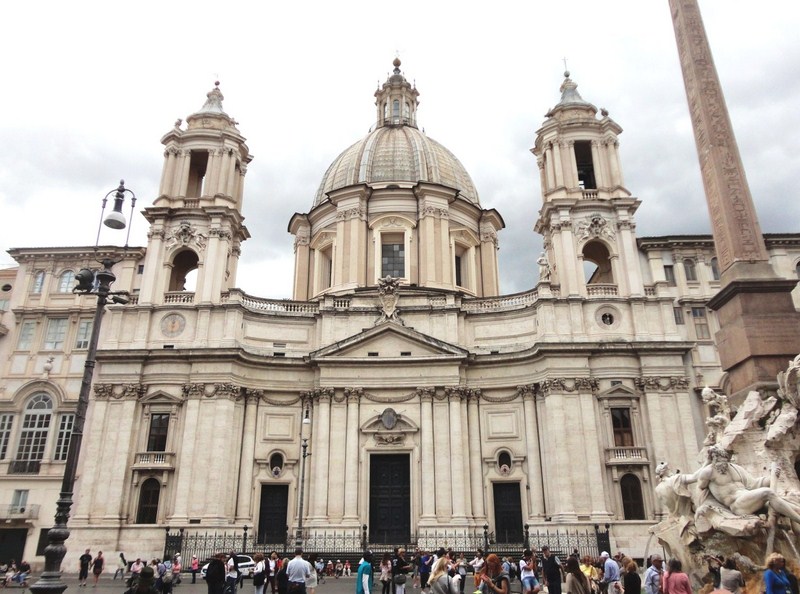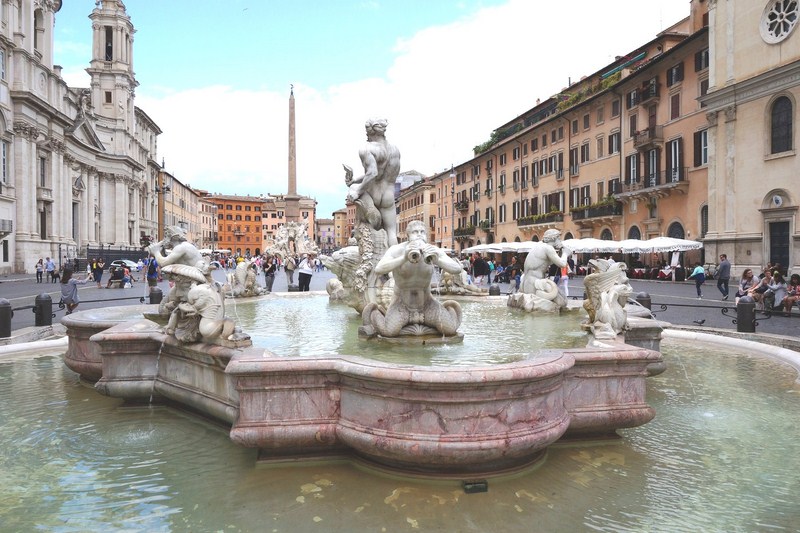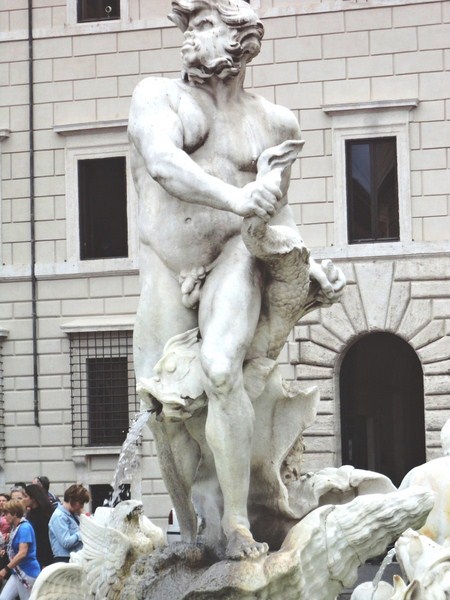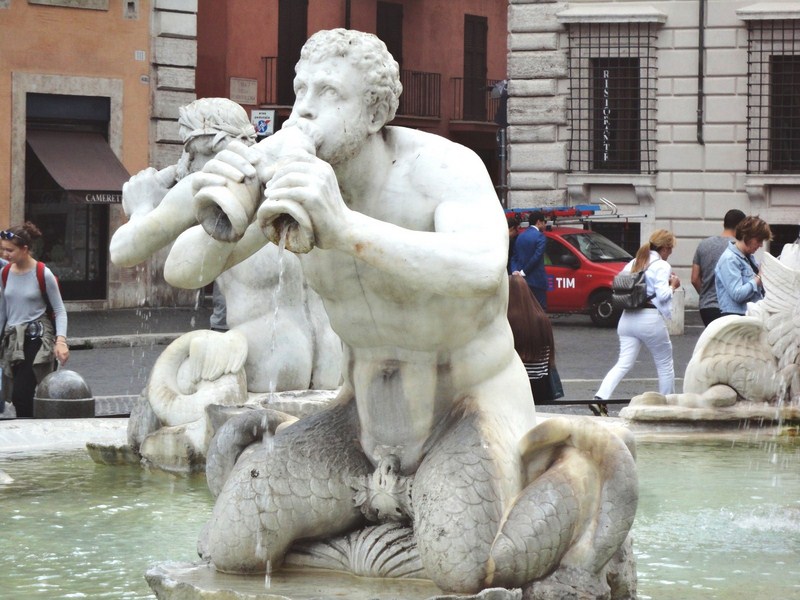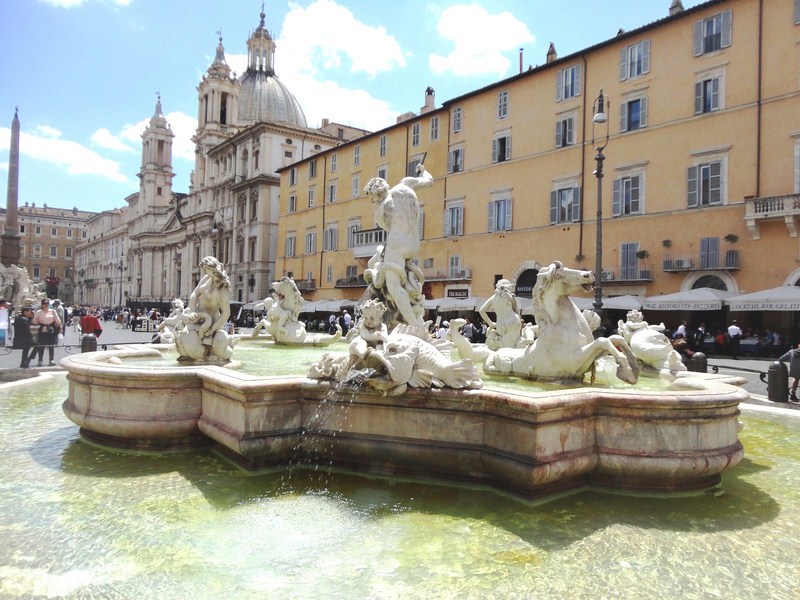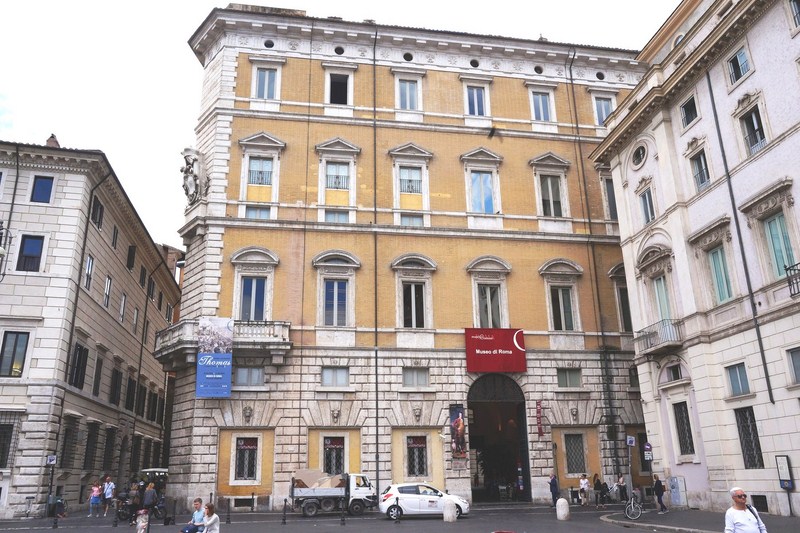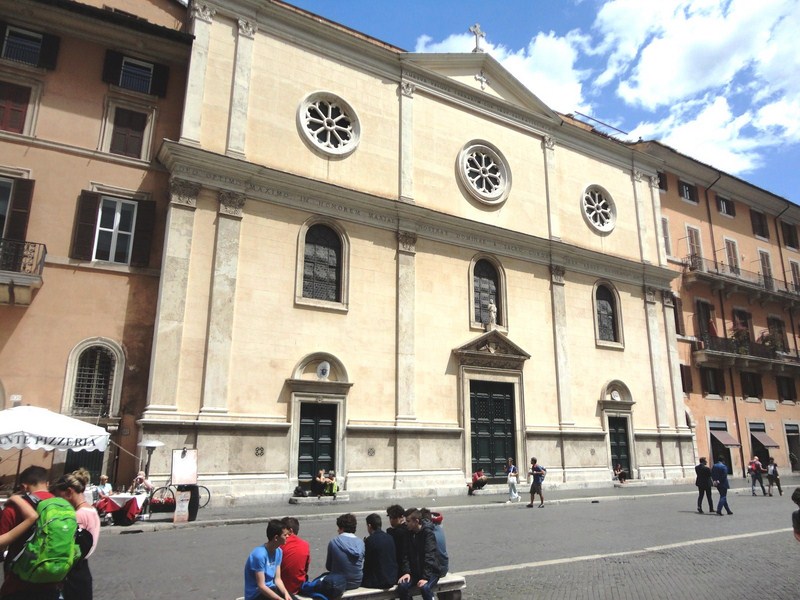The Fountain of the Four Rivers (Fontana dei Quattro Fiumi), triumphantly and theatrically unveiled to the Roman populace on June 12, 1651, is Rome’s greatest achievement in this genre and the epitome of Baroque theatricality.
This fountain, which can be strolled around, was built on Piazza Navona, the site of the Stadium of Domitian, built in 1st century AD. It was designed by Gian Lorenzo Bernini for Pope Innocent X (reigned 1644-1655). The pope’s family palace, the Palazzo Pamphili, faced onto the piazza as did the church of Sant’Agnese in Agone of which Innocent was the sponsor.
Bernini‘s design was influenced by the design of the Monument of the Four Moors (Monumento dei Quattro mori). It may have also been influenced by a fountain in Marino, Lazio which was constructed to commemorate the defeat of the Ottomans at the Battle of Lepanto in 1571.
The base of the fountain is a basin whose center has a slender, ancient Egyptian obelisk, brought in pieces from the Circus of Maxentius to Rome by the Emperor Caracalla. It was built for the Roman Serapeum in AD 81 but had been buried for a long time at Capo di Bove.
Beneath it are four semi-prostrate giant nudes of river gods, all in awe of the central tower surmounted with the Pamphili family emblem of a dove with an olive twig, symbol of Papal power and the Holy Spirit. The river gods depict the four major rivers of the four continents, (whose rivers feed the ocean, represented by the large pool) as then recognized by the Renaissance geographers, through which papal authority had spread.
Supported on the base by a jagged and pierced mountainous disorder of travertine marble rocks, the marble giants are arranged at the center of a scene of carved grottoes and decorated with flowers, exotic plants and 7 animals (a horse, a sea monster, a serpent, a dolphin, a crocodile, a lion and a dragon) that further carry forth identification.
Each carries a certain number of allegories and metaphors with it. The Nile, representing Africa, has a head draped with a loose piece of cloth, meaning that no one, at that time, knew exactly where the Nile’s source was. Symbolically, this also refers to what the Catholic world saw as the dark ignorance of the “pagan” world: the sculpture has not seen the light of Christianity
The apathetic Ganges river god, representing Asia, carries a long oar, representing the river’s navigability, and looks away from the light of the Church, representing the spiritual ignorance of this hedonistic land.
The Danube, representing Europe, touches the Pope’s personal coat of arms, since it is the large river closest to Rome. The most “civilized” and cultured of the figures, the Danube looks toward and embraces the light of the lord.
The Río de la Plata (the word plata means “silver” in Spanish), representing America, sits on a pile of coins, a symbol of the riches America could offer to Europe. The Río de la Plata also looks scared by a snake, showing rich men’s fear that their money could be stolen. Although he throws his hands back in surprise, this representative of the newly converted lands has begun to see the light.
There are a number of urban legends regarding the fountain, nasty rumors fed by the famous rivalry between the Bermini and Borromini, designer of the church of Sant’Agnese right in front of the fountain. Borromini lost the fountain commission to Bermini. Many tour-guides, would tell you that Bernini positioned the cowering sculpture of the Rio de la Plata River as if it feared the facade of the church could possibly crumble against him; that the statue of the Nile covered its head so as not to have to see the church; and that the statue of Sant’Agnese on the facade of the church, with her hand on her chest, seems to reassure the Rio de la Plata of the church’s stability. However, the truth is the fountain was completed several years before Borromini began work on the church.
Today, this revolutionary and grandiose monument to the power and glory of the pope and his family and dynamic fusion of architecture and sculpture, with its highly dramatic, evocative, and individualized figures, dramatically spurting water and a wealth of surprising and charming sculptural details, continues to amaze and entertain visitors to Rome.
Piazza Navona has two other fountains – the Fontana del Moro, at the southern end, and the Fountain of Neptune at the northern end. The Fontana del Moro has a basin and four Tritons sculpted by Giacomo della Porta in 1575. In 1673, Bernini added a statue of a Moor, standing on a conch shell, wrestling with a dolphin.
The Fountain of Neptune was also created by Giacomo della Porta in1574. In1878, the statue of Neptune, by Antonio Della Bitta, was added in to create a balance with La Fontana del Moro.
Other buildings within the piazza include the Museo di Roma, housed in the large Neoclassical Palazzo Braschi, covering the history of the city in the period from the Middle Ages through the nineteenth century; and the Church of Nostra Signora del Sacro Cuore (Our Lady of the Sacred Heart, also known as the Church of San Giacomo degli Spagnoli), the national church of the Spanish community in Rome.
Fountain of the Four Rivers: Piazza Navona, Boccadellaverità, Rome, Italy.

